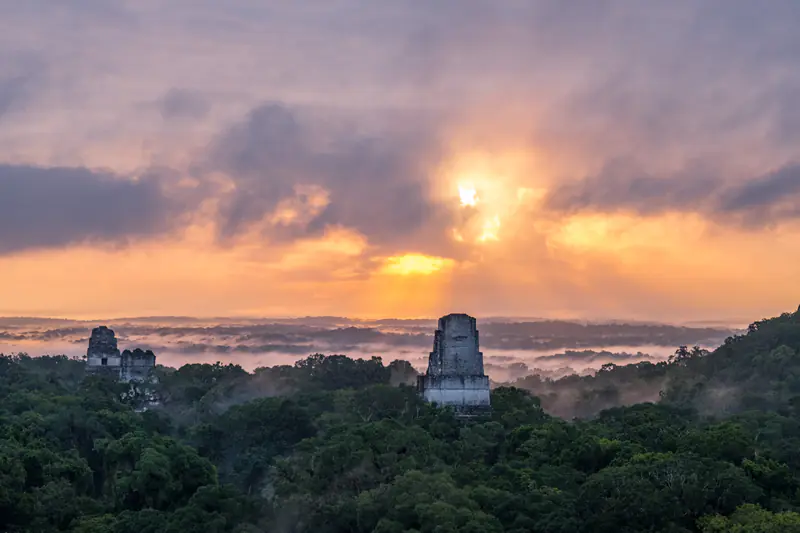UNESCO World Heritage Sites in Guatemala
Heritage Overview
Guatemala's UNESCO World Heritage sites preserve the remarkable achievements of ancient Mayan civilization alongside colonial architectural heritage. As one of the first Central American nations to ratify the World Heritage Convention in 1979, Guatemala demonstrated commitment to protecting sites of Outstanding Universal Value that illuminate Mesoamerican history. The country's heritage encompasses monumental ceremonial centers constructed during the Classic Maya period, showcasing advanced astronomical knowledge, sophisticated urban planning, and extraordinary artistic achievement. Ancient stone monuments bearing hieroglyphic inscriptions provide invaluable insights into pre-Columbian history and culture. These archaeological treasures serve as crucial links to understanding one of the world's most sophisticated ancient civilizations. Guatemala's contribution to global heritage extends through ongoing archaeological research, conservation methodology development, and cultural tourism initiatives supporting local communities. The protection preserves not only physical monuments but also living indigenous traditions maintaining continuity with ancient practices. This integration of heritage preservation and cultural vitality informs international approaches to safeguarding tangible and intangible cultural heritage across Latin America.
Essential Information
Visa Requirements
Citizens of 83 countries including the United Kingdom, European Union nations, United States, Canada, Australia, and New Zealand can enter Guatemala without a visa for tourism for up to 90 days. Passports must be valid for six months beyond arrival. The CA-4 Agreement allows free movement between Guatemala, Honduras, El Salvador, and Nicaragua, though the 90-day period applies collectively. Extensions of 30 days are available before expiry for a fee. Travelers from yellow fever transmission areas must present vaccination certificates. Verify current requirements at Guatemalan embassies, as regulations may change.
Currency
The official currency is the Guatemalan Quetzal (GTQ), named after the resplendent quetzal bird. While major credit and debit cards (Visa and Mastercard primarily) are accepted at upscale hotels, restaurants, and tour agencies, businesses commonly add 5-7% surcharges for card payments. Guatemala operates largely on cash, particularly in rural areas. ATMs are readily available in cities and towns near heritage sites, dispensing quetzales only with withdrawal limits around GTQ 2,000 per transaction. International visitors should notify banks before travel. Carrying sufficient cash is essential for archaeological sites and remote locations with limited card infrastructure.
Language
Spanish is the official language, spoken by 93% of the population. Twenty-two Mayan languages remain actively used in rural areas, with K'iche' being the second most spoken with nearly one million speakers. The 2003 Language Law recognises Mayan, Xinca, and Garifuna languages as national languages. English is spoken at major tourist sites, hotels, and heritage visitor centers, with staff accustomed to assisting international travelers. Basic Spanish phrases are helpful for communication outside tourist areas. Translation applications can facilitate interactions. Archaeological sites provide multilingual interpretive materials.
Climate
Guatemala's tropical climate varies dramatically by elevation, creating distinct regional weather patterns. Lowland archaeological sites and coastal areas remain warm year-round at 25-27°C, reaching 38°C during March-April. Highland cities including Guatemala City and Antigua enjoy comfortable temperatures of 16-21°C throughout the year, with cool evenings dropping to 12-17°C. The dry season (November-April) offers ideal conditions for heritage visits with minimal rainfall. The rainy season (May-October) brings afternoon thunderstorms. Plan visits during dry months for optimal archaeological site accessibility and photography conditions.
Featured Heritage Sites
Last updated: 22 October 2025
